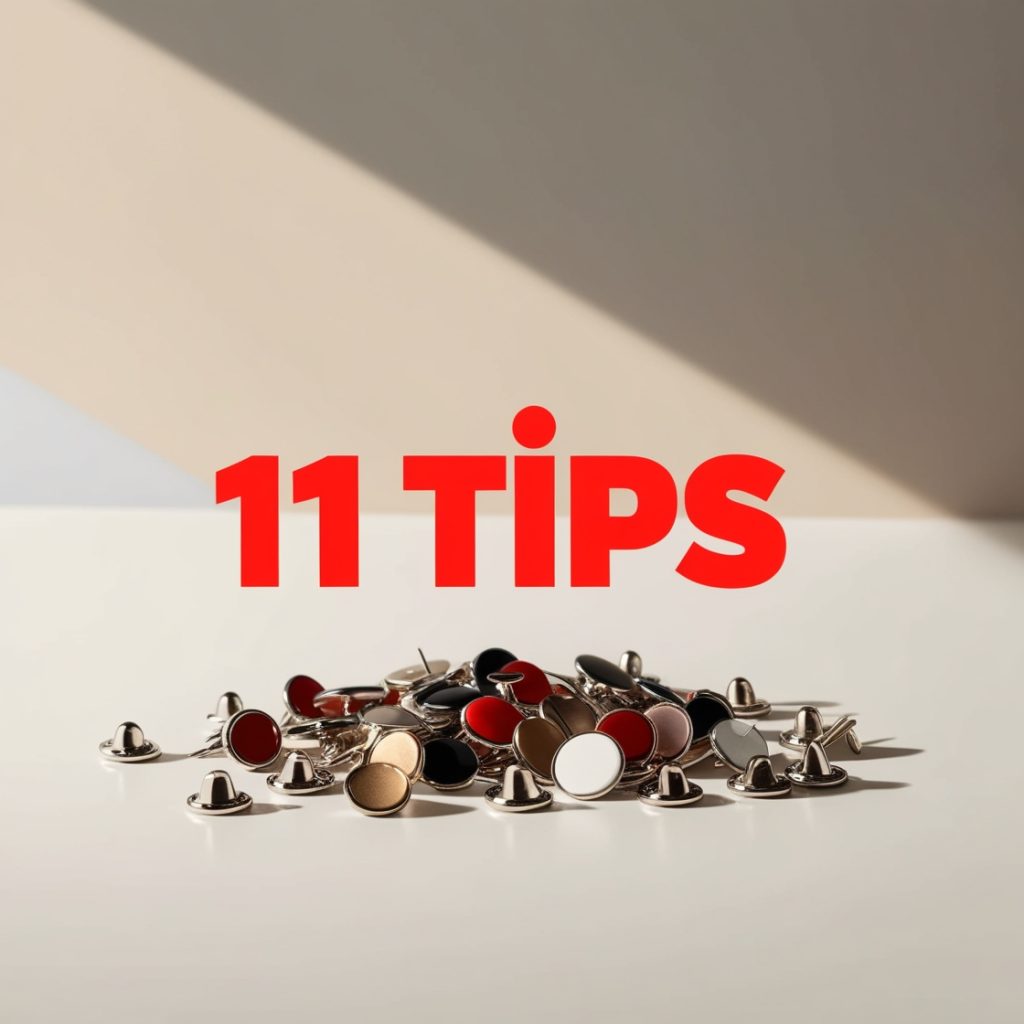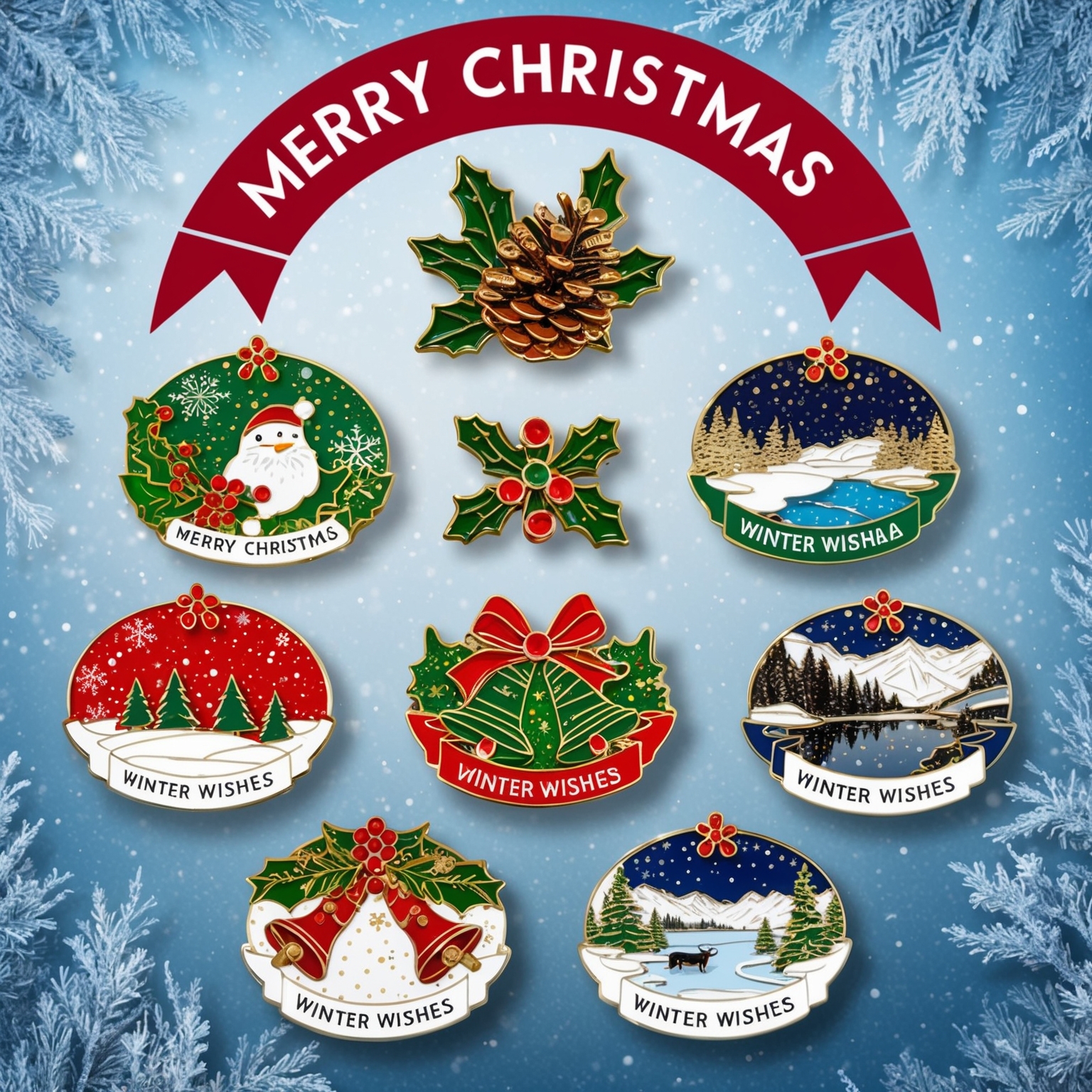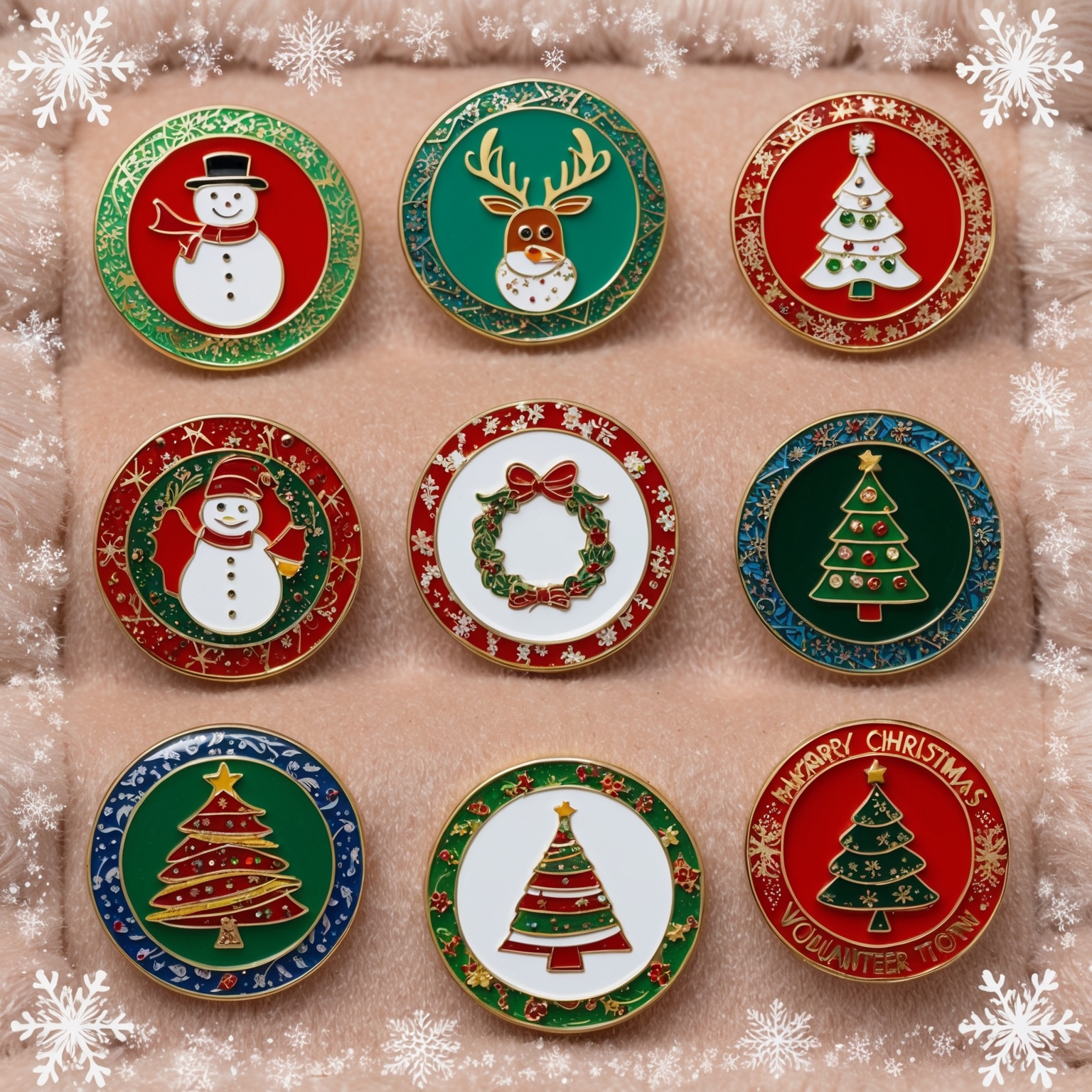Custom lapel pins have surged in popularity across a wide array of industries and communities. These small yet highly expressive accessories have found their way into corporate settings, promotional events, clubs, sports teams, social movements, and fashion. With their ability to convey messages, showcase branding, and celebrate special moments, custom lapel pins serve as both a practical and artistic tool for expression.
Whether you’re designing a custom lapel pin to promote a brand, reward employees, or simply create something fun and unique, the process requires a thoughtful approach to ensure that the final product resonates with the intended audience. Each design choice—whether it’s color, shape, or material—impacts how the pin will be received and remembered.
In this comprehensive guide, we’ll explore everything you need to know about designing a custom lapel pin, with 11 expert tips, tricks, and creative ideas to make your pins truly stand out. Let’s dive in!
1. Start with a Clear Purpose for Your Pin
Before embarking on your custom lapel pin design journey, it’s critical to define its purpose. Why are you creating the pin in the first place? Having a clear purpose will guide your design choices and ensure that the final product aligns with the desired message.
Key Questions to Consider:
- Who is your target audience? Is the pin intended for employees, fans, collectors, or event attendees?
- What message do you want to convey? Is the pin promotional, commemorative, or celebratory?
- What do you want the pin to symbolize? Should the pin reflect your company’s branding, a specific event, or a shared cause?
For example, if you’re creating a custom lapel pin for an annual conference, the design might focus on your company’s logo and event-specific elements, while a charity event pin might use symbols that resonate with the cause you are supporting.
2. Keep the Design Clean and Simple
Simplicity is key when designing custom lapel pins, especially given their small size. While it’s tempting to include a lot of detail, too much complexity can result in a cluttered, hard-to-read design. A clean, minimalistic design is more likely to stand out and make a strong impression.
Tips for Simplicity:
- Focus on 1-2 main elements: A logo, symbol, or short phrase is often enough to convey the message without overwhelming the viewer.
- Limit the color palette: Stick to 3-4 core colors that reflect your brand or the event theme.
- Use bold lines and simple shapes: This ensures that the design remains recognizable even from a distance or at a small size.
For instance, if you’re designing a custom lapel pin for a hiking group, you might opt for a simple mountain silhouette with the group’s name underneath. The key is to create a design that is visually impactful yet easy to reproduce on a small scale.
3. Material Selection: Choosing the Right Base for Your Design
The material you choose for your custom lapel pin is just as important as the design itself. Different materials can significantly influence the look and feel of the pin, as well as its durability. Depending on your budget, design complexity, and desired finish, there are several options to consider:
Soft Enamel
Soft enamel pins are popular for their affordability and versatility. These pins feature raised metal edges with recessed enamel paint, giving them a textured appearance. They’re perfect for designs with multiple colors or intricate details.
Hard Enamel
Hard enamel pins offer a smooth, polished finish because the enamel is added in layers and then polished flat. These pins have a more luxurious, professional look and are highly durable, making them ideal for corporate or commemorative purposes.
Die-Struck Pins
Die-struck pins are made entirely of metal without any enamel fill. The raised and recessed areas of the design give these pins a classic, timeless feel. They’re often used for awards, service recognition, and official uniforms.
Printed Pins
If your design includes fine details, gradients, or complex images, printed pins are an excellent option. These pins allow for full-color designs to be transferred directly onto the pin’s surface, making them ideal for designs with photographs or intricate artwork.
The material you choose should align with both the function and aesthetic of your pin. For a high-end corporate event, a hard enamel or die-struck pin might be most appropriate. On the other hand, a fun promotional pin for a product launch could benefit from a colorful soft enamel finish.
4. Get Creative with Shapes and Sizes
Don’t feel restricted by traditional circular or rectangular shapes when designing your custom lapel pin. Modern manufacturing techniques allow for custom shapes, so let your creativity run wild! A unique shape can make your pin more memorable and aligned with its purpose.
For example, a pizza restaurant could design a pin shaped like a pizza slice, while a space-themed event could feature pins shaped like rockets or stars. Custom-shaped pins are eye-catching and add an extra element of uniqueness to the design.
Size Considerations
The size of the pin will also affect its wearability and the level of detail you can include. Most lapel pins range between 0.75 inches and 2 inches. Smaller pins are subtler and more versatile, while larger pins can make a bolder statement and allow for more intricate designs.
While it’s tempting to go for larger sizes to showcase detail, remember that pins are meant to be worn on clothing. A larger size may not be as comfortable or practical for everyday wear.
5. Color Palette: Enhance Your Design with the Right Colors
Color can significantly impact how your custom lapel pin is perceived. Bright, bold colors can make the pin stand out, while subtle, neutral tones might give it a more elegant and understated look. When selecting colors, consider both the message you want to convey and how the colors will look on the material.
Best Practices for Color Selection:
- Stick to your brand’s colors: If you’re designing a corporate pin, consistency with your company’s branding is key.
- Contrast for readability: Ensure that any text or fine details have enough contrast against the background so they can be easily seen.
- Think about context: If your pin is commemorating a nature hike, consider earthy tones like greens and browns. For a tech event, metallic colors like silver or blue might work better.
Remember, enamel pins typically use solid, flat colors, so it’s best to avoid gradients or subtle shading unless you’re opting for a printed pin design. Additionally, enamel colors can appear slightly different on metal than on paper, so always request a sample or proof before final production to ensure color accuracy.
6. Add Texture for Visual Interest
Adding texture to your custom lapel pin can elevate the design and make it stand out. Texture adds depth and dimension, which can enhance the pin’s overall aesthetic. Whether through the use of raised metal elements, glitter enamel, or recessed areas, texture can create a tactile experience that sets your pin apart from flat designs.
Ways to Incorporate Texture:
- Raised and recessed elements: Use raised metal for the outlines of the design while leaving the enamel recessed, creating a multi-layered look.
- Sandblasting or engraving: For die-struck pins, sandblasting or engraving recessed areas can create a matte effect that contrasts with the polished metal.
- Glitter or metallic finishes: Adding glitter to the enamel or using metallic accents can give the pin a playful or luxurious feel, depending on your design.
Texture not only adds a visual appeal but also enhances the pin’s physical presence, making it more enjoyable to touch and wear.
7. Incorporate Symbols and Icons to Tell a Story
Symbols and icons can communicate a lot without taking up much space. A good custom lapel pin often incorporates imagery that resonates with the wearer or reflects the purpose of the pin.
For example:
- A heart icon for healthcare workers: This simple symbol conveys care, compassion, and dedication, making it ideal for pins given to medical staff or volunteers.
- A flame or torch for achievement: A torch is often used to symbolize knowledge, progress, and achievement, making it a powerful symbol for pins commemorating accomplishments.
- A handshake for partnerships: This timeless icon represents unity and cooperation, which could be perfect for commemorating a business deal or collaboration.
Using widely recognized symbols allows you to communicate your message quickly and effectively, even with minimal text.
8. Select the Right Pin Backing
The type of backing you choose for your custom lapel pin is more important than you might think. The backing ensures that the pin stays securely attached to the wearer’s clothing, hat, or bag. There are several types of pin backings to consider, each with its own advantages:
Butterfly Clutch
The most commonly used pin backing, the butterfly clutch, uses small, squeezable clips that secure the pin in place. It’s durable and reliable for most purposes.
Rubber Clutch
A softer alternative to the butterfly clutch, rubber clutches offer a comfortable grip and a more casual look. They’re especially popular for enamel pins meant for everyday wear.
Magnetic Backing
Magnetic backings are great for delicate fabrics where you don’t want to create holes. However, they may not be as secure for heavier or larger pins.
Safety Pin Back
Safety pin backings are ideal for larger pins or pins intended for outerwear, as they provide more stability. This is particularly useful for pins that will be worn on jackets or backpacks.
Choosing the right backing ensures the pin can be worn easily and securely, enhancing its practical use.
9. Add Personalization for a Special Touch
Personalized lapel pins add an extra layer of meaning for the recipient. Whether you’re recognizing employees for their years of service, commemorating a milestone event, or honoring a group of volunteers, adding a personal touch to the pin makes it more meaningful.
Ideas for Personalization:
- Include names: Adding the recipient’s name or initials to the pin makes it more personal.
- Add dates: Commemorating a specific event with the date of the occasion can make the pin a treasured keepsake.
- Numbered editions: If you’re producing limited-edition pins, numbering each pin can add value and exclusivity.
Personalized pins make great gifts, awards, or collectibles and are more likely to be cherished and worn by the recipient.
10. Consider the Occasion for Collectibility
If you’re designing custom lapel pins for an event, consider creating limited-edition pins or a series of pins to enhance their collectibility. Offering unique designs for each year of a recurring event or creating different versions for different levels of participation (e.g., “VIP” or “Volunteer”) can encourage attendees to collect multiple pins.
Many organizations, such as sports teams, music festivals, or theme parks, create collectible pins to build excitement and engagement around events. For example, the Olympics are famous for their pin trading culture, with attendees collecting and trading pins that represent different countries, sports, and years.
Collectible pins become highly sought after, especially when they are part of a series or limited run. This adds a sense of exclusivity and encourages attendees to actively participate in pin trading or collecting.
11. Work with a Professional Manufacturer for Best Results
Even with the best design in hand, the quality of your custom lapel pin will depend on the manufacturer you choose. It’s essential to partner with a reputable pin manufacturer who can guide you through the process, provide samples, and deliver high-quality results.
What to Look for in a Manufacturer:
- Experience: Choose a manufacturer with a track record of producing high-quality pins for a variety of industries and events.
- Customization options: Ensure the manufacturer offers the materials, finishes, and design options you need.
- Customer service: Look for a company that provides clear communication and is willing to work with you through revisions and proofs to perfect your design.
- Turnaround time: If you need the pins by a certain date, confirm the manufacturer’s production timeline to avoid delays.
Most manufacturers will provide a proof of the pin design before production begins, allowing you to make adjustments if necessary. This helps ensure that the final product meets your expectations in terms of quality, color, and design.
Designing a Custom Lapel Pin That Stands Out
Designing a custom lapel pin is both an art and a science. From selecting the right materials and colors to crafting a design that tells a story, each decision you make will influence how the pin is perceived and cherished by its wearers. Whether you’re creating a pin for a special event, a corporate brand, or a personal project, following these 11 tips and tricks will ensure that your custom lapel pin stands out for all the right reasons.
By focusing on simplicity, choosing the right materials, adding creative elements like texture and symbols, and working with a trusted manufacturer, you can create a pin that’s not just a piece of metal, but a meaningful and memorable keepsake. Custom lapel pins have the power to convey messages, celebrate achievements, and build lasting connections—and with the right design, your pin can do all of that and more.
If you are interested in buying high quality custom trading pins, you can call us at 1-800-641-1299 or fill out a FREE quote form.







